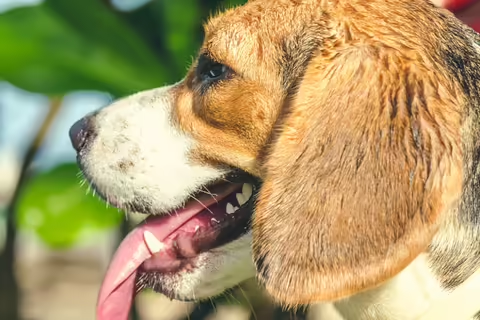URBANA, Ill – Despite being the dog days of summer, the hottest time of the year isn’t always safe for pets.
Dogs, cars, and summer can add up to serious health concerns. If a car is too hot for a person to stay in it, then it’s too hot for a dog.
Jennifer Reinhart, a specialist in veterinary internal medicine at University of Illinois Veterinary Teaching Hospital, says the dangers of dehydration, heat stroke, and other hot weather hazards are completely preventable and could prevent a trip to the vet.
Dehydration is the first hot weather concern to avoid.
“Dehydration is the absence of water from tissue, and mild dehydration is virtually impossible to spot,” says Dr. Reinhart. “When it gets serious, the big signal is decreased skin turgor or stretch.”
To check if a pet is dehydrated, lightly pinch its skin. If the animal’s skin stays pinched together, quickly provide water and move it into a cool space.
It’s also important to pay attention to a dog’s activity levels when playing outside in the summer. If a pet is slowing down and becoming lethargic, the best bet is to give them a break and some cold water.
A pet’s size, breed, and health history can also influence its risk of heat-related health concerns. She adds that puppies and young animals may not yet know their own limits and will play to exhaustion. Overweight animals will also need more water.
“Larger, hairier breeds, especially those that originated in colder regions, can be at a higher risk of dehydration in hot weather,” says Reinhart. “Their risk of heatstroke is even greater.”
Heatstroke
Heatstroke is another common concern in summer. With a heatstroke, the animal’s body loses the ability to regulate its own temperature. Unlike dehydration, heatstroke can develop quickly, in as little as 10 minutes. If a dog collapses suddenly while playing outside, get it inside and cool, or take them straight to the vet.
Caroline Tonozzi, a small animal emergency and critical care specialist at the Illinois Veterinary Teaching Hospital, says heatstroke commonly starts out with exercise.
“The dog is taken on a run during the early morning. The dog seems okay at first, but as the day progresses, the dog begins panting, is lethargic, and seems less playful,” Tonozzi says. “Instead of being brought inside, he stays out with his owners, where he risks a rapid decline in health.”
Leaving a pet in a hot car for only a few minutes can result in heatstroke, especially if they’ve been exposed to heat all day.
Special Hazards
Other summer hazards include swelling in the throat from excessive panting as the dog works to lower its body temperature and bare paws getting burned from walking on hot concrete or blacktop.
Before embarking on any summer adventures with pets, remember these tips to make sure they stay happy and healthy:
- Pets don’t have the option to take off layers like humans can.
- Fresh water is best. Avoid letting pets drink from possibly contaminated puddles or ponds.
- If the ground would burn your bare feet, it’s likely too hot for pets’ paws.
SOURCE: Dr. Loukia Agapis, Illinois Shelter Medicine Program Director and Instructor, Dr. Caroline Tonozzi, Clinical Assistant Professor of veterinary clinical medicine
WRITER: Alli Kimmons, Writer, University of Illinois Extension
ABOUT EXTENSION: Illinois Extension leads public outreach for University of Illinois by translating research into action plans that allow Illinois families, businesses, and community leaders to solve problems, make informed decisions, and adapt to changes and opportunities.
